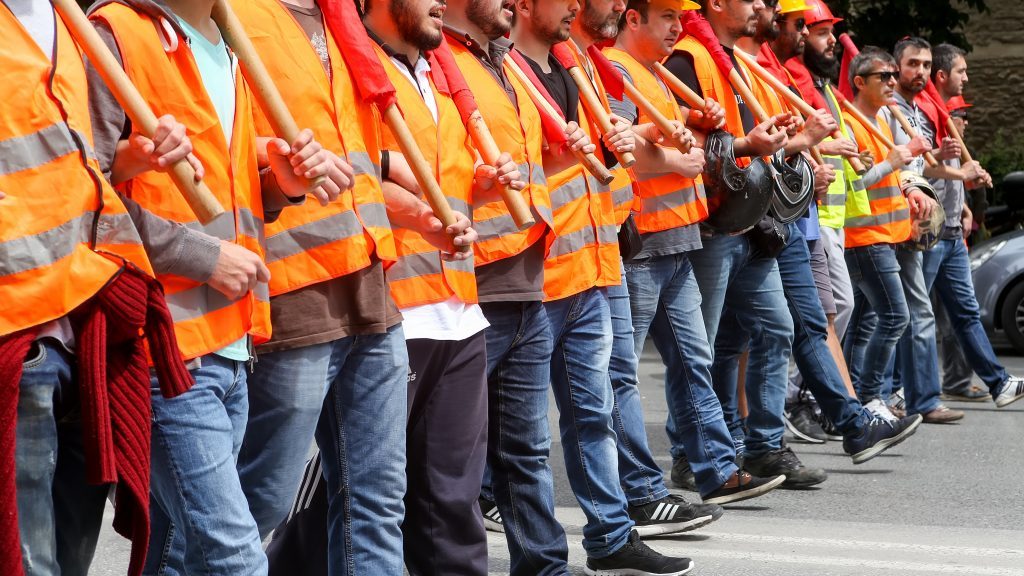Ontario construction stakeholders are calling for stepped-up collaboration across the board to meet the labour force demands in the sector over the next decade.
The stakeholders were responding to the recent BuildForce Canada report warning of significant labour shortages in the sector. BuildForce’s 2020–2029 Construction and Maintenance Looking Forward provincial report said the construction sector will have to hire and retain almost 100,000 new workers in the province over the next 10 years to keep pace with demand.
The sector will be most hard-hit by labour shortages this year and in 2024-26, indicated the report, released Feb. 4.
David Frame, director of government relations for the Ontario General Contractors Association, said while steps being taken now could mitigate the crunch that has been identified in the labour force a half decade away, right now it’s too late and the labour shortage is already causing projects to be cancelled.
He explained it is a case of demand chasing scarce supply in Ontario’s busy construction marketplace, with wages going up, affecting project costs, which in turn is causing some projects to be cancelled.
“There have already been projects that were announced that were cancelled,” said Frame.
“In the ICI construction sector at this time, we do not have the manpower capacity to commit to all the projects that are being presented to us. Unfortunately, this results in higher costs. So, in some cases the prices we are putting out there are higher than some owners anticipate. The result of that is, some projects get cancelled because the budgets aren’t there to build them.”
Frame along with Skills Ontario CEO Ian Howcroft, Council of Ontario Construction Associations president Ian Cunningham and Progressive Contractors Association Ontario vice-president Karen Renkema all noted that the sector and its supporters including the Ontario government have been anticipating the labour shortage for years, given the impending retirement of baby boomers.
We do need a radical rethink, with reforms and flexibility in attracting skilled workers,
— Karen Renkema
Progressive Contractors Association
Cunningham and Frame both said foreign workers and workers from other provinces will have to make up the worker supply gap in the short term as the sector waits for the next wave of recruits to be ready for work on jobsites.
“Work in the trades is rewarding and fulfilling,” Cunningham said. “But it takes a long time to become a full-fledged journeyperson through an apprenticeship so that is not the immediate solution.”
Howcroft said Skills Ontario is supportive of the provincial government’s recent outreach initiative promoting skilled trades as a worthwhile career, calling it an example of how the sector is now acting rather than just talking about solutions.
“There will be an awful lot of people leaving the workforce in the next few years so we no longer have the luxury of time, it is not something we can put off for five or 10 years,” said Howcroft. “When you add how long it takes to train someone, it goes to show action needs to be taken now.
“The ministry (of Labour, Training and Skills Development) has launched its awareness campaign, which is aligned with what we are trying to do, so the government is focused on this and the colleges, the educational system seems to be very interested in this. We are having very good reception from the audiences that we speak to so that leaves me very encouraged and hopeful that we are all moving in the right direction.”
Renkema proposed an integrated solution, noting the PCA’s member contractors already observe that some new workers they employ migrate from other sectors within Canada such as manufacturing.
What could assist with the current shortages, she suggested, is a “building block” solution with “micro-credentialing” of workers who may already have some existing skills, training to meet immediate needs.
“We do need a radical rethink, with reforms and flexibility in attracting skilled workers,” Renkema said.
“First it is looking at the training system and are we training for the jobs we currently need, perhaps thinking with a little bit more flexibility, less regimented, perhaps in the voluntary trades, micro-credential someone to meet an immediate need and allowing them to have building blocks to build on top of that.
“With building blocks, they can get one certification and then another certification later. That works very well in the voluntary trades.”
The focus in Ontario, said Renkema, needs to be on that type of training and not on training for trades that existed 30 years ago, nor on acrimonious discussions about redefining and trying to split trades.
Howcroft echoed several of the others when he said, “I think there is more collaboration and coordination needed to make sure what we need gets done.” Cunningham said, “What is lacking in these efforts is some sharing of best practices.”
Frame said the sector has always shown resilience in the face of challenges and predicted it will once again as it deals with the workforce problem — possibly using new technologies, as an example.
“This industry is built around the ability to adapt, and take on increased challenges,” Frame said. “It can’t turn on a dime but it’s very good at adapting, so we are going to see a lot of that.”











No one wants to slug and burnout when they can get a better paying job without the physical and mental toll. The long commutes, early wake ups, non-promised future job prospects, low wages, all repel people away.
It costs more for construction workers to keep up two residences when they can’t have a tax write off. I’m going state side where they are giving me $77.00 US a day board money and a total pay package of over $72.00 an hour with lots of overtime. Not to mention bonuses.